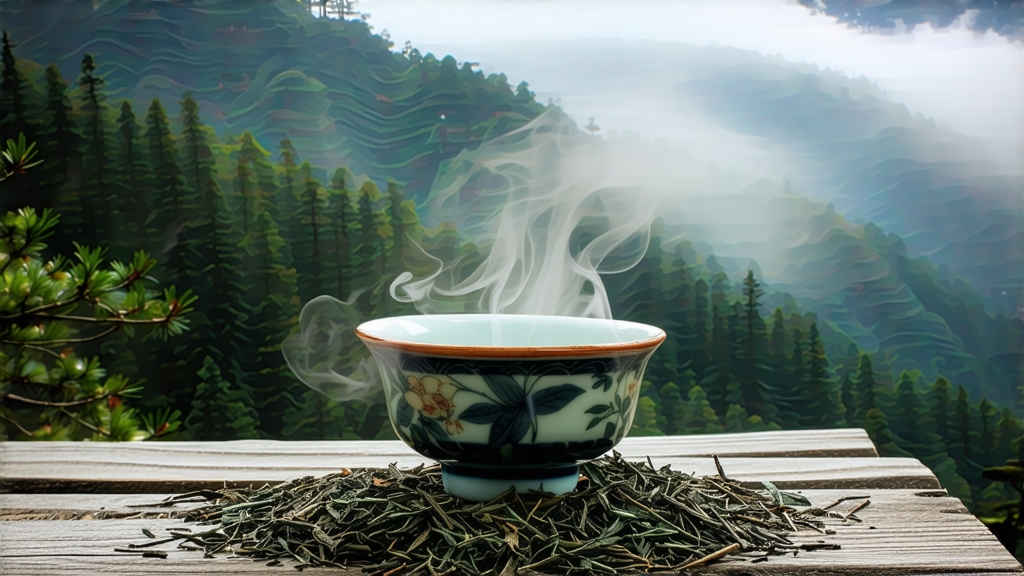
Ask most tea lovers to name a Chinese black tea and they will answer Keemun or perhaps Yunnan Gold; few realize that the very first black tea ever created was Lapsang Souchong, born in the cool, bamboo-veined valleys of the Wuyi Mountains in northern Fujian. Its Chinese name, Zheng Shan Xiao Zhong, literally means “fine mountain small cultivar,” yet its global reputation rests on a far more flamboyant identity: the original pine-smoked tea that perfumed the docks of Amsterdam and London four centuries ago and, according to legend, inspired the entire category of black tea. Today, whether you meet it in the subtle, honeyed non-smoked style cherished by Beijing connoisseurs or in the assertive, campfire aroma that once accompanied clipper ships around the Cape of Good Hope, Lapsang Souchong remains a living time capsule of Chinese craft and transcontinental trade history.
History: From Misty Crags to European Parlors
The Wuyi massif—its cliffs tattooed with calligraphy and its ravines filled with rhododendron—has produced tea since the Song dynasty, but all early Wuyi teas were green or oolong. The shift to black tea is traditionally dated to 1568, late Ming, when a passing army requisitioned tea workers near Tongmu village, delaying the usual pan-firing schedule. To save the oxidizing leaves from spoilage, farmers rushed them over smoldering pine fires, inadvertently creating a wholly new red-black leaf and a fragrance that would soon be coveted overseas. By 1604 Dutch merchants had carried the novel tea to Europe, where it fetched higher prices than green tea and quickly acquired the foreign name “Bohea,” a corruption of “Wuyi.” When the British East India Company began planting tea in India and Ceylon in the nineteenth century, they used Lapsang Souchong seeds and withering techniques; thus every modern black tea, from Assam to Ceylon, carries a genetic and technological bloodline to this small Fujian village.
Terroir: Why Only Tongmu Can Claim the Title
Chinese law is unusually strict: only leaf picked within the 565 km² core of the Wuyi National Nature Reserve may be sold as “Zheng Shan” (original mountain) Xiao Zhong. The reserve’s altitude (600–1,500 m), subtropical monsoon climate, and mineral-rich lateritic soil force slow growth, concentrating amino acids and volatile aromatics. Native pine species—Masson, Huangshan, and Fujian red—provide the resin that gives authentic smoke; outside the reserve, identical cultivars and the same craft still yield pleasant tea, but it must be labeled “wai shan” (outside mountain) and lacks the sweet, resinous balance that made the original famous.
Cultivars: The Small Leaf That Thinks Big
The classic cultivar is Xiao Ye Zhong (small-leaf), a shrub-type camellia sinensis var. sinensis selected for cold tolerance and low bitterness. Within Tongmu, micro-propagated clones such as Zhen Mei, Que She, and Mi Xiang have been introduced to increase fragrance, yet purists insist the seed-propagated old bushes—some over 120 years—deliver the longest aftertaste. A single 300-year-old mother tree still stands near Longchuan Gorge, its leaves reserved for government gifts and auctioned for over 10,000 USD per kilogram.
Craft: Smoke, Time, and the Invisible Hand
Picking begins around Qingming (early April) when two leaves and a bud reach 3–4 cm. The morning harvest is immediately withered across bamboo racks suspended over dying pine embers in the upper level of the three-story “qing lou” (withering house). Here, temperature and smoke density are judged by eye: too hot and the leaf caramelizes, too cool and the enzymatic oxidation stalls. After 8–10 hours the leaves, now limp and smoky, are rolled under foot-powered wooden boards to rupture cell walls, then oxidized in pine-wood crates for 4–6 hours until they turn a coppery mahogany. The critical step is the final smoking: the leaf is spread 3 cm thick on woven rattan trays and placed 1.5 m above a pinewood fire that must smolder, never flame, for up to 18 hours. Master smokers control airflow